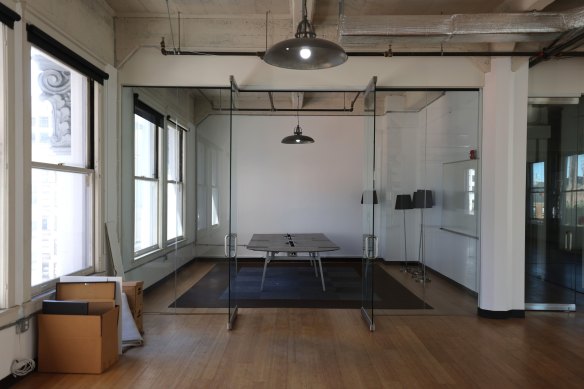
Loading
Moreover, the pandemic changed the nature of work, with the emergence of widespread working from home, or at least hybrid work models, that have left offices under-utilised and led to the shrinking of demand for office space. There’s also the underlying demand, led by efforts to reduce global carbon emissions, for increasing energy efficiency, which favours newer buildings over old and which is creating a two-tier CRE market, where the less energy-efficient buildings are experiencing even more significant declines in value.
All those developments led to lower valuations from a starting point that was inflated by the pre-pandemic settings.
Potential trigger for wider problems
The US Federal Reserve Board’s own financial stability review last month also highlighted the potential for real estate to be a potential trigger for wider financial stress, where the factors cited earlier could generate large realised losses and make the small and regional banks that do most of the lending for CRE and residential property in the US particularly vulnerable.
Given the high levels of leverage in the $US24 trillion ($36.5 trillion) CRE sector, a slowdown in the US economy could exacerbate losses and discourage lenders from supplying credit, which would further weigh on an economy that has, to date, been surprisingly resilient despite the Fed’s 13 interest rate rises.
In its September bulletin, our Reserve Bank described conditions in global CRE as “challenging,” noting that reduced rental income, falling valuations and re-financing risks in the sector had historically been the main source of banking system losses.

An empty office in San Francisco.Credit: Getty
It said CRE market fundamentals were weak, with the sector experiencing structural and cyclical headwinds partly brought on by the pandemic.
Office attendance rates globally of only 60 to 70 per cent of pre-pandemic levels, along with the shift to online shopping during the pandemic, have reduced demand for space and increased vacancy rate.
Loading
In Australia, CBD vacancy rates of about 14 per cent are at their highest level since the mid-1990s and debt-servicing costs are weighing on returns. Effective rents on new leases were (as they are in the US) 5 to 10 per cent lower than before the pandemic.
In the US, Europe and the United Kingdom, CRE aggregate valuations fell by between 10 and 20 per cent since the middle of last year. They’re down about 10 per cent in Australia. The value of listed real estate investment trusts exposed to CRE had fallen by about 30 to 40 per cent in most jurisdictions, including Australia, the RBA said.
After the recession in the early 1990s, where CRE-related losses ravaged Australia’s banks and nearly brought Westpac down, and after the post-financial crisis reforms that made bank regulation as stringent in Australia as anywhere else in the world, the major banks are far less exposed to CRE losses than they once were, and are indeed less exposed than its European or US counterparts.
But that doesn’t mean that a global property market crisis wouldn’t have implications here.
In the US, overdue commercial property loans are at 10-year highs and were increasing even before WeWork, one of the largest tenants in major US (and UK) cities, filed for bankruptcy earlier this month.
The value of distressed real estate in the US – properties seized by lenders or in liquidator’s hands – is estimated at close to $US80 billion, with more than $US200 billion and as much as $US1.2 trillion of other properties thought to be under pressure from slumping valuations.

WeWork was, for a time, a darling of Wall Street and Silicon Valley.Credit: Bloomberg
Valuations are declining more rapidly in the US than in Europe or the Asia Pacific region, and office space utilisation is less than 50 per cent of pre-pandemic levels. As in Europe, transaction volumes have halved.
China’s property market woes aren’t primarily related to CRE, but focused on apartment developments. Recent data from Hong Kong and Shanghai, however, suggest that values there are also tumbling.
Loading
With about $US2.2 trillion of US and European commercial property loans scheduled for refinancing next year and no interest rate relief in sight, the combination of higher interest costs, lower property valuations, structural overcapacity and therefore ongoing high vacancy rates – plus the need to refit older buildings to make them energy-efficient and reflect the post-pandemic shift to smaller but better quality spaces – could make refinancing second and third-tier properties extremely challenging over the next year or so.
Because they have historically been a major source of systemic stress, the vulnerable state of CRE markets around the world bears close monitoring, particularly if their downturns were to come alongside significant economic slowdowns. Recessions – or even any material slowdowns – would, of course, amplify their threat to financial systems’ stability.
The Market Recap newsletter is a wrap of the day’s trading. Get it each weekday afternoon.





